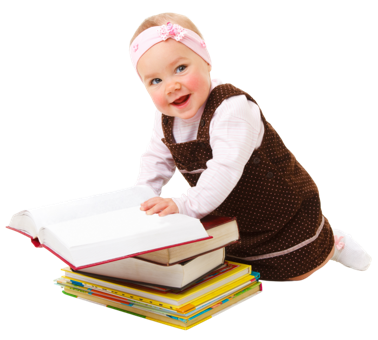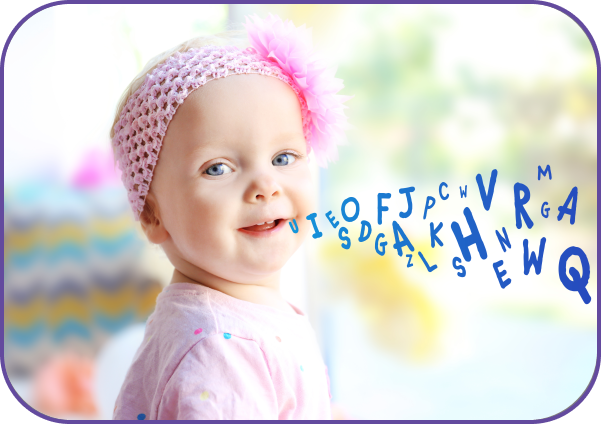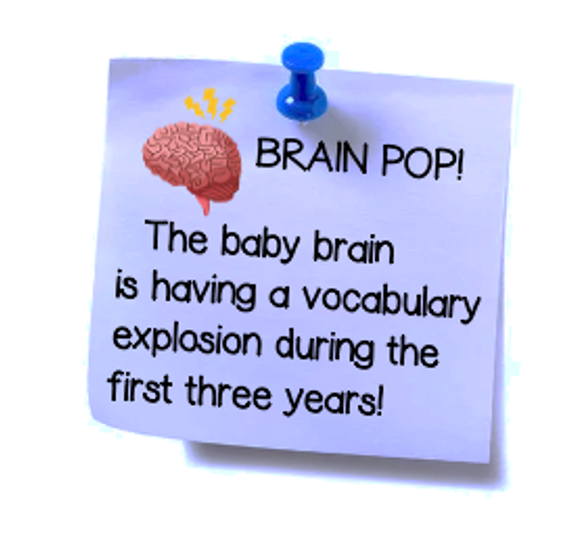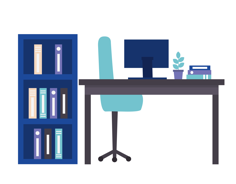The Developing

Speaking is the expressive part of language, it is communicating one’s wants, needs, thoughts and ideas. A baby does this almost immediately! Not speaking but producing vocal sounds. Crying is one of the first ways an infant will let a parent know a “need”. Feed me or change me are at the top of their list! Later different sounding cries are communicated, signaling a specific “want”. As the baby grows older other sounds will begin to develop. These beginning non-sensical sounds will lead to later speech patterns.
Cooing and gurgling start usually within the first few months. This is an important first step in learning to talk. The baby brain is coordinating its physical body to develop ooh aah sounds. These cooing vowel-like sounds are formed by using the roof of their mouth, tongue and lips. Cooing is followed by babbling.
Babbling is really the beginning of the talking process. It starts around six months and continues throughout the first year. Babies are getting more control over their speaking muscles enabling them to form word sounds. First one syllable sounds pop out–ga, ga--which later change to 2 syllable sounds - baba nana. These are followed by multiple syllable sounds dagaba.
Language play is all about practicing sounds. Soon these babblers are communicating with their parents. This progression of language learning leads to putting together the correct speech sounds to form a word which carries meaning. Mama or Dada may be blurted out when calling for that specific person.


Initial noises, babbling sounds and a first word are the beginning steps to language production. The baby is learning how to comprehend and express more words. Vocabulary development is now in full swing, learning new words is the name of the game!
Now the toddler is ready to communicate using other single words to state a thought, or want, such as “go” means I want to go. Once the single words have started to get responses, it won’t be long before word grouping occurs. A toddler will combine two words to express an idea. (More milk Me go)
After tons of praise and encouragement more words are strung together when talking. These almost sentences will not contain perfect grammar but will have additional words. Usually, their speech is understood by their parents but not necessarily by everyone. ( I sees cat Me want ball )
A toddler nearing three years of age produces more complete and/or longer sentences that are understood by most people.
Developmental milestones are important for showing the progression of language acquisition. However, it’s important to remember that children move through these stages at their own pace. Yes, individuality is what it’s all about for the developing reader!



Kaplan, Ann MD, (2018), Language Milestones: 1 to 2 Years, https://www.healthline.com/health/baby/toddler-language-milestones
Mayo Clinic, (2023), Healthy Lifestyle, Infant and toddler health, https://www.mayoclinic.org/healthy-lifestyle/infant-and-toddler-health/basics/infant-and-toddler-health/hlv-20049400
National Institute on Deafness and Other Communication Disorders, NIHCD, (2022), Speech and Language Milestones, https://www.nidcd.nih.gov/health/speech-and-language
